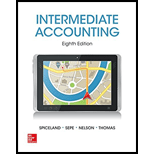
1
Financial Statements: Financial statements are condensed summary of transactions communicated in the form of reports for the purpose of decision making. The financial statements reports, and shows the financial status of the business. The financial statements consist of the
Financial Disclosures: Financial disclosures refer to all material, significant and relevant information about the reporting organization that are essential to understand the financial statements of the organization entirely. It also helps to evaluate the performance and the financial health of an organization. These disclosures are either provided on the face of the financial statement or as notes to the financial statements as supporting schedules.
GAAP:
Generally Accepted Accounting Principle (GAAP) is a common set of accounting principles, standards, and procedures that the companies must follow at the time of preparation of the financial statements.
IFRS:
International Financial Reporting Standard is abbreviated as IFRS. The IFRS is set up to bring a standard global language in accounting, so that the other firms across the globe can understand the accounting term of all other businesses.
Rules of Debit and Credit:
Following rules are followed for debiting and crediting different accounts while they occur in business transactions:
- Debit all increase in assets, expenses and dividends, all decrease in liabilities, revenues and stockholders’ equities.
- Credit all increase in liabilities, revenues, and stockholders’ equities, and all decrease in assets and expenses.
To determine: The reason for increase in total deferred income of €249 as of the end of fiscal 2013.
2
To explain: the threshold for recognition of provision under IFRS different than it is under U.S. GAAP.
3. a.
Beginning and ending balances of total provisions and retirement benefits shown in Note 32 for fiscal 2013 tie to the balance sheet.
b.
To prepare:
4
To know: Whether amounts of
Want to see the full answer?
Check out a sample textbook solution
Chapter 13 Solutions
INTERMEDIATE ACCOUNTING W/CONNECT PLUS
- The incremental net income formarrow_forwardEliza had a commercial warehouse destroyed in a hurricane. The old warehouse was purchased for $310,000, and $94,000 of depreciation deductions had been taken. Eliza received insurance proceeds of $610,000. Although the new warehouse was larger and more modern than the old one, it qualified as replacement property. Eliza acquired the new property 11 months after the hurricane for $660,000. What is the amount of Eliza's realized gain, recognized gain, and the basis in the new property? Answerarrow_forwardMeadowlane Furnishings had a beginning inventory of $105,000, an ending inventory of $147,000, a cost of goods sold of $325,000, and a sales revenue of $510,000. What is Meadowlane’s days in inventory?arrow_forward
- Help me with thisarrow_forwardDetermine the accounts receivable average collection periodarrow_forwardLucid Echo Studios has forecasted sales of $24,000,000 for next year and expects its cost of goods sold (COGS) to remain at 75% of sales. Currently, the firm holds $2,700,000 in inventories, $1,800,000 in accounts receivable, and $2,200,000 in accounts payable. What is the length of Lucid Echo Studios' cash conversion cycle (CCC)? a. 40.94 days b. 31.58 days c. 37.53 days d. 43.75 daysarrow_forward
- Answer? Financial accounting questionarrow_forwardGerald Books Ltd. currently has $720,000 in accounts receivable and generated $5,600,000 in sales (all on credit) during the year that just ended. The firm's days sales outstanding (DSO) is how many days? Use 365 days as the length of a year in all calculations. Gerald Books Ltd.'s CFO is unhappy with its DSO and wants to improve collections next year. Sales are expected to grow by 10% next year, and the CFO wants to lower the DSO to the industry average of 28 days. How much accounts receivable is the firm expected to carry next year?arrow_forwardWing Apparel Store had a balance in the Accountsarrow_forward

 AccountingAccountingISBN:9781337272094Author:WARREN, Carl S., Reeve, James M., Duchac, Jonathan E.Publisher:Cengage Learning,
AccountingAccountingISBN:9781337272094Author:WARREN, Carl S., Reeve, James M., Duchac, Jonathan E.Publisher:Cengage Learning, Accounting Information SystemsAccountingISBN:9781337619202Author:Hall, James A.Publisher:Cengage Learning,
Accounting Information SystemsAccountingISBN:9781337619202Author:Hall, James A.Publisher:Cengage Learning, Horngren's Cost Accounting: A Managerial Emphasis...AccountingISBN:9780134475585Author:Srikant M. Datar, Madhav V. RajanPublisher:PEARSON
Horngren's Cost Accounting: A Managerial Emphasis...AccountingISBN:9780134475585Author:Srikant M. Datar, Madhav V. RajanPublisher:PEARSON Intermediate AccountingAccountingISBN:9781259722660Author:J. David Spiceland, Mark W. Nelson, Wayne M ThomasPublisher:McGraw-Hill Education
Intermediate AccountingAccountingISBN:9781259722660Author:J. David Spiceland, Mark W. Nelson, Wayne M ThomasPublisher:McGraw-Hill Education Financial and Managerial AccountingAccountingISBN:9781259726705Author:John J Wild, Ken W. Shaw, Barbara Chiappetta Fundamental Accounting PrinciplesPublisher:McGraw-Hill Education
Financial and Managerial AccountingAccountingISBN:9781259726705Author:John J Wild, Ken W. Shaw, Barbara Chiappetta Fundamental Accounting PrinciplesPublisher:McGraw-Hill Education





